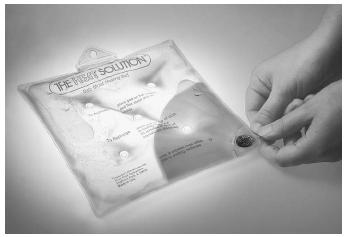Sodium

MELTING POINT:
97.8°C
BOILING POINT:
883°C
DENSITY:
0.971 g/cm
3
MOST COMMON IONS:
Na
+
Sodium is a soft, silvery alkali metal and reacts vigorously with water to generate hydrogen gas. The word sodium is derived from "sodanum" (a Medieval Latin name for a headache remedy), and "natrium" (Latin for "soda") is the origin of the element's symbol. Humphry Davy isolated the element in 1807 via the electrolysis of caustic soda, NaOH. Currently, sodium metal is obtained from the electrolysis of a molten mixture of sodium chloride and

calcium chloride (in an electrochemical cell called the Downs cell). In nature it is never found in its elemental form, but sodium compounds are quite common. Sodium is the most abundant alkali metal and the seventh most abundant element in Earth's crust (22,700 ppm). Sodium burns yellow-orange in the flame test.
The demand for metallic sodium is declining. Its primary use had been as a substance used in the production of tetraethyl lead, an antiknocking gasoline additive; however, because of its damaging effects on the environment, tetraethyl lead is being phased out. Sodium is used to produce sodamide from reaction with ammonia and to reduce TiCl 4 , ZrCl 4 , and KCl to Ti, Zr, and K, respectively. An alloy of Na and K is used in nuclear reactors as a heat transfer agent.
Several sodium compounds are economically important. NaCl (ordinary salt) is a de-icing compound, a condiment, and a food preservative. NaOH finds use in the manufacture of soaps, detergents, and cleansers. Na 2 CO 3 (washing soda) is used to make glass, soaps, fire extinguishers, and "scrubbers" that remove SO 2 from gases generated in power plants before it escapes into the atmosphere. The paper industry uses Na 2 SO 4 (salt cake) to make brown wrapping paper and corrugated boxes.
Appropriate sodium ion levels (along with potassium levels) are essential for proper cell function in biological systems.
SEE ALSO Alkali Metals .
Nathan J. Barrows
Bibliography
Emsley, John (2001). Nature's Building Blocks: An A-Z Guide to the Elements. New York: Oxford University Press.
Greenwood, N. N., and Earnshaw, A. (1997). Chemistry of the Elements, 2nd edition. Boston: Butterworth-Heinemann.
Lide, David R., ed. (2000). CRC Handbook of Chemistry & Physics, 81st edition. New York: CRC Press.
Comment about this article, ask questions, or add new information about this topic: